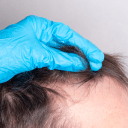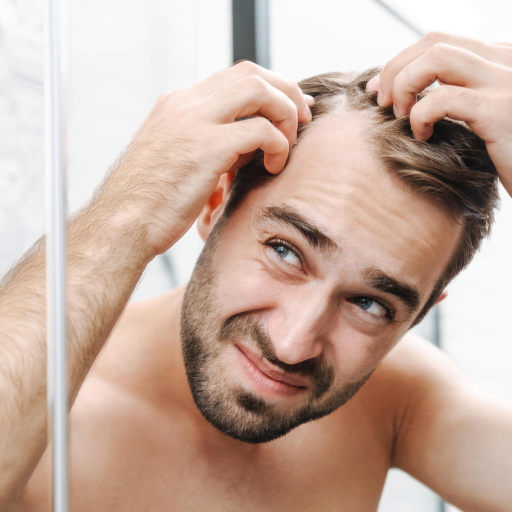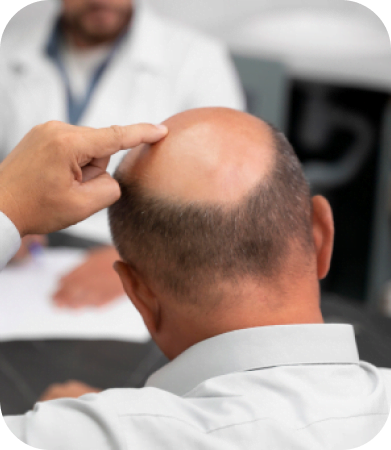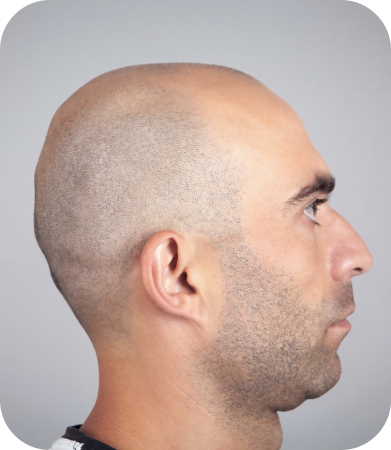Minoxidil (Rogaine) for Hair Loss
Rogaine may seem like a quick fix for hair loss. Many individuals may use or are familiar with this product, but is it effective for combating hair loss?

Rogaine may seem like a quick fix for hair loss. Many individuals may use or are familiar with this product, but is it effective for combating hair loss?


In the 1950s, the Upjohn Company developed minoxidil and tested it to see if it could cure ulcers. Tests showed that it did not work as a cure for ulcers but instead discovered the product was a vasodilator. It opens up blood vessels and also helps regulate blood pressure. In the late 1970s, the FDA approved this compound to be distributed as Loniten in the form of oral pills. It was a treatment for high blood pressure.
In 1988, Loniten’s manufacturer received a new patent, and the FDA approved it to be sold as Rogaine.
In 1991, minoxidil was produced for women. Later, in 1996, Rogaine got approval to be sold over the counter (OTC).
Some people might think that Rogaine and Propecia are the same. But they’re different. Rogaine is a drug that individuals must take daily, while Propecia is only taken once a day for three months. The dose of Rogaine is 2 milliliters per day, but the dose of Propecia can change from person to person. Both drugs have side effects such as hair thinning and headaches.
Make sure your scalp is clean and dry before applying minoxidil. You can use this product on damp hair, but it must be dry on the scalp. Fill the applicator with 1 milliliter of medication or 20 drops using an eyedropper for the liquid solution. Apply the liquid solution equally dispersed to the damaged area of the scalp by parting your hair in the thinning area. Rub it lightly. Before using other styling products, or before going to sleep, make sure the solution is totally dry.
You can use the foam solution in the same way as the liquid solution but with a different dosage. First, wash your hands in cold water and thoroughly dry them. Apply half a capful of foam to the scalp and massage it in gently. Allow the foam to dry entirely before styling your hair or going to bed.
You should avoid using minoxidil on days when you color your hair or have it chemically treated since it can cause discomfort to your scalp.
If your doctor tells you to, don’t use it on other parts of your body. Minoxidil should not be used on red, painful, irritated, scraped, cut, or infected skin. You also shouldn’t use it on inflamed or burnt scalps. This use may cause the medicine to get absorbed into your body, which can have serious side effects. This product may include alcohol, irritating and drying up the scalp.
Whether you used the liquid or foam treatment, wash your hands well afterward. Make sure you don’t get any of the medication in your eyes. If you do, rinse your eyes with plenty of cool water immediately.
Hair regrowth is a lengthy process. To get effective results, you must use minoxidil for four months. After four to six months, consult your doctor if your condition hasn’t improved or has worsened. If you do not see any improvement after six to 12 months, your doctor might recommend finasteride or hair transplants.
Tell your doctor if you’ve had an unexpected or adverse reaction to this medicine in the past. Some burning, stinging, or redness at the site where you applied this medicine may occur. These symptoms will go away without medical help. Many people who use this drug have no major adverse effects. However, if you experience any of the following symptoms of serious side effects, stop taking this medication and get medical care immediately.
If you notice any of the following uncommon adverse effects, stop using minoxidil immediately and contact your doctor.

Doctors use minoxidil to treat male pattern baldness and when finasteride hasn’t resulted in a visible rise in hair growth on the scalp. Finasteride is the most effective non-surgical choice for the majority of men. Some people respond well to minoxidil, while finasteride is the most effective non-surgical option for others. On the other hand, finasteride is effective at preventing hair loss. This medicine causes a considerable rise in hair growth on the scalp, according to research published in the Journal of the American Academy of Dermatology.
The patient’s particular needs determine whether doctors should use finasteride or minoxidil. Before deciding on your chosen hair loss treatment, talk with your doctor.
Read More Show LessIf minoxidil isn’t working for you and you’re seeking a more long-term solution to your hair loss problems, make an appointment for an initial consultation.
You can also view our videos, before and after images, and inspiring testimonials from our clients about our products and services. Why don’t you give us a call to talk about your treatment options?